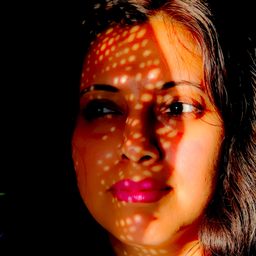- Home
- /
- spirits
- /
- vodka
- /
- pall mall cocktail
Pall Mall Cocktail
How to Batch and Barrel Age Cocktails?
MOREHow-To Guide: Batching Cocktails
Ingredients:
- Spirits (whiskey, rum, gin, etc.)
- Liqueurs
- Non-perishable mixers (bitters, syrups)
- Fresh ingredients (if applicable, for last-minute addition)
- Mixing utensils
- Sealable containers (jars, bottles)
Instructions:
1. Choose Your Cocktail:
- Select a cocktail that suits batching, considering the ingredients' stability and the drink's overall flavor profile.
2. Calculate and Mix Ingredients:
- Scale up the individual cocktail recipe to fit your desired batch
size. Combine all ingredients in a large mixing container.
3. Stir or Shake:
- Stir or shake the batch thoroughly to ensure uniform mixing. Use a long spoon for stirring large batches.
4. Taste and Adjust:
- Taste the batch and adjust flavors if necessary. Remember that the flavors will meld and evolve over time.
5. Transfer to Containers:
- Pour the batch into sealable containers, leaving some space at the top to account for expansion if freezing.
6. Label and Date:
- Label the containers with the cocktail name and the date of preparation. This helps track aging times.
7. Store or Age:
- Refrigerate or freeze the batch if it contains perishable
ingredients. Otherwise, store it in a cool, dark place to maintain
freshness.
8. Serve:
- When ready to serve, pour the batch
into a mixing vessel, add any fresh ingredients, and stir or shake.
Serve as you would an individual cocktail.
How-To Guide: Barrel Aging Cocktails
Ingredients:
- Spirits
- Liqueurs
- Non-perishable mixers
- Fresh ingredients (for last-minute addition)
- Oak barrel or oak alternatives (chips, staves)
- Funnel
- Measuring tools
Instructions:
1. Choose Your Barrel:
- Select a clean, charred or toasted oak barrel or alternative like oak chips or staves. Sterilize the barrel before use.
2. Calculate and Mix Ingredients:
- Scale up your cocktail recipe to fit the barrel size. Combine all ingredients in a large mixing container.
3. Funnel Into Barrel:
- Use a funnel to pour the mixed cocktail into the barrel. Leave some space at the top to account for expansion.
4. Seal and Date:
- Seal the barrel tightly and note the date of preparation. This is crucial for tracking aging times.
5. Store and Age:
- Store the barrel in a cool, dark place. The aging process may take
weeks to months. Taste periodically to monitor flavor development.
6. Filter and Clarify (Optional):
- Before serving, you may choose to filter the cocktail through a fine
mesh or cheesecloth to remove sediment and clarify the liquid.
7. Serve:
- When ready to serve, pour the aged cocktail into a mixing vessel, add
any fresh ingredients, and stir or shake. Serve and enjoy the unique
flavors developed through aging.
Batching and barrel aging
cocktails can be a rewarding process, providing depth and complexity to
your favorite drinks. Experimentation is key, so don't hesitate to
adjust recipes and aging times to suit your taste preferences. Cheers to
the art of crafted cocktails!
Pall Mall Cocktail
- Gin 4.5 cl
- Sweet Vermouth 1.50 cl
- Dry Vermouth 1.5 cl
- White Creme De Cacao 1.5 cl
Any Glass of your Choice

Pall Mall Cocktail Ingredients
Gin,Sweet Vermouth,Dry Vermouth,White Creme De Cacao,
Pall Mall Cocktail Recipe
Stir the gin, vermouths and creme de cacao together in an old-fashioned glass half-filled with ice cubes, and serve.
Gin
Gin is a distilled alcoholic beverage that has it's origin in medicinal liquor made by monks and alchemists across Europe. The historical Gin producing regions are Southern France, Flanders and Netherlands. Gin was originally created to provide aqua vitae from grape and grain distillates.
During the Middle ages, the newly found substance Ethanol was considered by Alchemists to be the water of life, and an aqueous solution of ethanol was in use all over Europe and had different names and is literally the origin of many spirits like Whisky ( from the Gaelic uisce beatha for water of life ). Today Gin is produces from a wide range of ingredients, which gave rise to numerous distinct styles and brands. The predominant flavour of Gin is from the Juniper berries and then each different distillery flavours it further with an assortment of botanicas or herbs, spices, floral and fruit flavours, in different combinations. Gin is commonly drank mixed with Tonic water but it is also often used as a base spirit for many gin based flavoured liqueurs like Sloe Gin.Sweet Vermouth
Vermouth the French for German Wermut, Wormwood in English, is an aromatic fortified Wine, flavoured with various botanicals like roots, barks, flowers, herbs, seeds and spices.
Although traditionally Vermouth was used for medicinal purposes, it has been also served as an apéritif in its modern avatar. The modern Vermouth first appeared in and around the 18th Century in Turin. By the late 19th Century it became very popular with bartenders as a key ingredient in cocktail mixology.
Martini, Manhattan, Rob Roy and Negroni were a few cocktails that Vermouth grew in popularity with. But later during the 20th Century, Vermouth slowly lost its glory and Dry Martinis and extra Dry Martinis with little or no Vermouth gained over the original Martini. Modern Martinis usually have a splash of Vermouth to add that herbacious texture to it.
Historically, there have been two Vermouth types, Dry and Sweet, but with demand variations have come up now. that include extra-dry white, sweet white, red, amber and rose.
Vermouth is produced by adding proprietory mixture of aromatic botanicals to a base wine or a base wine plus spirit or spirit only, which is usually redistilled before adding it to a base of neutral grape wine or unfermented wine must ( freshly pressed grapes and the juice ). After the wine is aromatised and fortified. it is sweetened and the end product is a Vermouth.
Dry Vermouth is what makes the character of the original Martini, and a Dry Vermouth has less sugar and is more herbacious but less spicier than Sweet Vermouth.Dry Vermouth
Vermouth the French for German Wermut, Wormwood in English, is an aromatic fortified Wine, flavoured with various botanicals like roots, barks, flowers, herbs, seeds and spices.
Although traditionally Vermouth was used for medicinal purposes, it has been also served as an apéritif in its modern avatar. The modern Vermouth first appeared in and around the 18th Century in Turin. By the late 19th Century it became very popular with bartenders as a key ingredient in cocktail mixology.
Martini, Manhattan, Rob Roy and Negroni were a few cocktails that Vermouth grew in popularity with. But later during the 20th Century, Vermouth slowly lost its glory and Dry Martinis and extra Dry Martinis with little or no Vermouth gained over the original Martini. Modern Martinis usually have a splash of Vermouth to add that herbacious texture to it.
Historically, there have been two Vermouth types, Dry and Sweet, but with demand variations have come up now. that include extra-dry white, sweet white, red, amber and rose.
Vermouth is produced by adding proprietory mixture of aromatic botanicals to a base wine or a base wine plus spirit or spirit only, which is usually redistilled before adding it to a base of neutral grape wine or unfermented wine must ( freshly pressed grapes and the juice ). After the wine is aromatised and fortified. it is sweetened and the end product is a Vermouth.
Dry Vermouth is what makes the character of the original Martini, and a Dry Vermouth has less sugar and is more herbacious but less spicier than Sweet Vermouth.White Creme De Cacao
Creme de Cacao is a chocolate liqueur that has probably been produced and sold in France since as early as 1666. In America a Chocolate wine was popular in the 18th Century, it's ingredients included sherry, port, chocolate and sugar.
A modern recipe for chocolate liqueur at home lists the ingredients as chocolate extract, vanilla extract and simple syrup and in purest form, chocolate liqueur is clear and colours may be added.
Creme de Cacao can be consumed straight and as an apertif, in cocktails and in desserts, in dessert sauces, cakes and truffles.
Trending Recipes
Please Note All Recipes and Articles on this site are for entertainment and general information only. None of it is to be considered final or absolutely correct or medical in nature.
However, we have embarked on a journey of manually updating the relative strength of cocktails, their flavour profile and in the future aim at providing approximate calories per drink too.
Blue Tick Project:We aim at manually validating and verifying each cocktail in their current context and mark them as valid, where, a blue tick would mean that the recipe has been verified and is 100% accurate while an orange tick would mean the recipe has low confidence.
Where as a grey tick would mean that the recipe has not yet been manually validated or verified recently.
Note: The Cocktail photos used are graphical representations of the glass and colour of a drink, these are generated using information from the recipe and we personally strive at providing real photographs of cocktails and we hope we can replace all representational photos with real photos soon.
Contact Us using the Email Contact on the Sidebar if you think any Copyrighted photo has been unintentionally used on this site, and we'll take remedial action.
Some of the Photos are sourced from Royalty Free Photo Platforms like FreePik, Unsplash and Wikimedia Commons
About Us
Neel B and Mani, we are a team of two, from Calcutta, India. We are professional software engineers and passionate cocktail enthusiasts. We built this app because we saw a need for a more comprehensive and user-friendly way to find cocktails and bartending recipes. We hope you enjoy using our app as much as we enjoyed making it!We decided to use our technology skills to help others who were in the same position as us and wanted to experiment with making cocktails at home but didn\u2019t know where to start. We have been working together for more than two years and has managed to collect an extensive library of recipes as well as tips and tricks for making the perfect cocktail.
 Neel B is an Electronics and Telecommunications Engineer and martial arts and fitness enthusiast. He is an avid reader, compulsive doodler, and painter. His love for cocktails arises from the art in it and the history that traces the ups and downs of modern civilisation over centuries.
Neel B is an Electronics and Telecommunications Engineer and martial arts and fitness enthusiast. He is an avid reader, compulsive doodler, and painter. His love for cocktails arises from the art in it and the history that traces the ups and downs of modern civilisation over centuries. Maniis an ERP and SaaS developer and architect by day and a cocktail enthusiast in her leisure. She holds a Masters in Computer Application and Programming. In addition to writing stories on the history of cocktails and alcohol, she has a special interest in cocktails in literature. She believes that the perfect cocktail can make any moment special.
Maniis an ERP and SaaS developer and architect by day and a cocktail enthusiast in her leisure. She holds a Masters in Computer Application and Programming. In addition to writing stories on the history of cocktails and alcohol, she has a special interest in cocktails in literature. She believes that the perfect cocktail can make any moment special.
